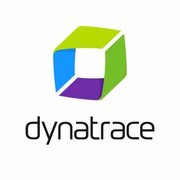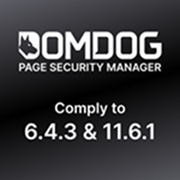
Best Runtime Application Self-Protection Software 2025
What is Runtime Application Self-Protection (RASP) Software?Runtime Application Self-Protection (RASP) software provides real-time monitoring and analysis of application runtime execution to identify and respond to suspicious or malicious behavior in the runtime environment. RASP software is implemented on the same server as the application it is protecting. RASP can also provide layered security on top of first-line defenses, such as network firewalls. It provides additional protection against ...
We’ve collected videos, features, and capabilities below. Take me there.
All Products
Learn More about Runtime Application Self-Protection Software
What is Runtime Application Self-Protection (RASP) Software?
Runtime Application Self-Protection (RASP) software provides real-time monitoring and analysis of application runtime execution to identify and respond to suspicious or malicious behavior in the runtime environment. RASP software is implemented on the same server as the application it is protecting. RASP can also provide layered security on top of first-line defenses, such as network firewalls. It provides additional protection against attackers who have already managed to penetrate perimeter defenses like network firewalls
RASP software operates directly in the application’s runtime environment, giving the tool closer access to and protection for applications than most other mechanisms. This closeness and tailoring to a given application allows for real-time monitoring and intervention, depending on how the RASP software is configured. RASP software also doesn’t have to interfere with or influence application design since it sits on the server, but it can still be built into an app’s source code if desired.
By resting next two or within the application, RASP software reduces the threats associated with Bring Your Own Device (BYOD) policies, which have increasingly become the norm for businesses at all scales. It also improves zero-day threat protection while simultaneously reducing false positives, since the monitoring configuration is so specialized to the given application.
Runtime Application Self-Protection Capabilities
RASP continuously intercepts and validates calls between the application and the system throughout the application’s runtime. RASP software can monitor both the traffic to an application and direct changes to the runtime environment, granting additional security against malicious trusted actors. RASP software is often compared to web application firewalls, but RASP software functions within the application itself, leading to less maintenance and updating than WAFs require to maintain security standards.
RASP software normally operates either in diagnostic or in protection mode. Diagnostic mode focuses on alerting administrators of particular threats or vulnerabilities in real time, while protection mode allows the RASP software to automatically intervene to prevent an active or ongoing threat. The most notable capability of protection mode is to independently terminate sessions when necessary. It can have this power without risking disrupting numerous legitimate activities because RASP software is much more tailored to identifying and blocking specific behavior or malicious content at critical vulnerabilities for that specific application, dramatically reducing the number of false positives.
Runtime Application Self-Protection Comparison
When comparing Runtime Application Self-Protection software, consider these key factors:
Programming Language Support: not all RASP software is programming-language agnostic. Buyer should ensure that each product can support the runtime environments of their applications specifically.
Integrations: How well does each RASP software integrate with the organization’s existing security tech stack? Consider systems like SIEMs, web application firewalls, and application monitoring tools. The ability to centralize RASP alerts with other security platforms will heavily impact manageability and scalability.
WAF & RASP Bundling: Many vendors suggest combining RASP capabilities with other security tools like web application firewalls. Some vendors will offer RASP bundled with WAFs, which can be more scalable and efficient if adopted in tandem.
Start a RASP software comparison here
















